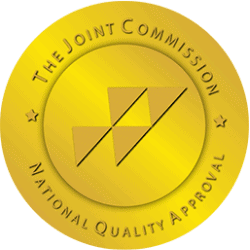Navigating adolescence comes with its unique set of challenges, and one prevalent concern is the heightened susceptibility of teens to addiction. In this dynamic development phase, factors like peer influence, curiosity, and an evolving brain can create a perfect storm.
Understanding why teens are more prone to addiction than adults is crucial for parents, educators, and healthcare professionals. We at Ambrosia Treatment Center located in West Palm Beach, Port St. Lucie, and Singer Island, Florida, will shed light on the intricate web of factors influencing teen substance abuse, aiming to foster awareness and provide insights into effective prevention and intervention strategies.
How Does The Adolescent Brain Work?

This area undergoes significant changes during adolescence, solidifying neural connections and refining cognitive functions. However, the prefrontal cortex matures slower than the brain’s reward center, the limbic system. This imbalance can lead to heightened sensitivity to rewards and an underdeveloped ability to assess risks.
Such neurobiological nuances make teens more prone to impulsive actions and experimentation, including substance use. Understanding the intricacies of the adolescent brain provides valuable insights for parents, educators, and healthcare professionals, guiding efforts to support healthy cognitive development and reduce the risk of addictive behaviors during this critical phase of life.
How Common Is Teen Addiction?
Teen addiction is a pressing and unfortunately common issue. According to various studies, a significant number of adolescents engage in substance abuse, with some progressing to addiction. The National Institute on Drug Abuse reports that nearly 5% of high school seniors in the United States use illicit drugs regularly.
Alcohol consumption is also prevalent, with around 60% of high school seniors admitting to drinking in the past year. The availability of prescription medications further compounds the problem. These statistics underscore the urgency of addressing teen addiction.
Early intervention and preventive measures, including education, open communication, and support, play pivotal roles in mitigating the risk factors associated with substance abuse in adolescents.
Why Are Teens More At Risk For Addiction Than Adults?
Let’s look at the factors making teens more susceptible to addiction than adults:
The adolescent brain’s prefrontal cortex, responsible for decision-making, is still maturing, leading to heightened impulsivity and reduced impulse control compared to adults.
Teens exhibit increased sensitivity to rewards and novelty, making them more prone to seeking pleasurable experiences, including substance use.
The desire for acceptance and identity development can result in heightened susceptibility to peer pressure, increasing the likelihood of teens experimenting with substances.
The developmental stage of adolescence fosters a greater inclination toward risk-taking, contributing to the willingness of teens to engage in substance use.
Adolescents, facing the stresses of this life stage, may lack fully developed coping mechanisms, making some more prone to turning to substances as a way to cope with challenges.
The ongoing physical and hormonal changes during adolescence can impact risk perception and decision-making.
Family dynamics, including a history of substance abuse, lack of parental supervision, or family stress, can contribute to a teen’s vulnerability to addiction.
Co-occurring mental health disorders, such as depression or anxiety, can increase the risk of substance abuse as a form of self-medication.
Easy access to drugs or alcohol, whether at home or through social circles, can influence a teen’s likelihood of experimentation.
Exposure to media glorifying substance use can contribute to shaping attitudes and behaviors related to drug and alcohol consumption.
Why Are Adolescents More Susceptible To Mental Illness Than Adults?
Adolescents are more susceptible to mental illness than adults due to a combination of biological, psychological, and environmental factors unique to this developmental stage. These include
The adolescent brain undergoes significant changes, with the prefrontal cortex (responsible for decision-making and impulse control) still developing. This can affect emotional regulation and increase vulnerability to mental health issues.
Puberty brings about hormonal fluctuations that can impact mood and contribute to the onset of mental health disorders.
Adolescence is a critical period for identity formation, and the stress of self-discovery, coupled with societal expectations, can contribute to anxiety and depression.
The desire for social acceptance can lead to exposure to peer pressure and potential stressors, influencing mental health.
Family relationships and dynamics play a crucial role. Conflict, dysfunction, or lack of support in the family environment can contribute to mental health challenges.
Adolescents may experience trauma or stressors such as academic pressure, bullying, or relationship issues, which can contribute to the development of mental health disorders.
A family history of mental illness can increase the likelihood of adolescents experiencing similar challenges.
Adolescents are still developing coping mechanisms, and the absence of effective strategies to deal with stressors can contribute to mental health issues.
Experimentation with drugs and alcohol, prevalent during adolescence, can exacerbate or trigger mental health disorders.
Exposure to cyberbullying, unrealistic social standards, and excessive screen time can contribute to mental health challenges.
How Does Drug Use Interfere With Major Brain Development?
Yes, drug use during adolescence can significantly interfere with major brain development. The adolescent brain is undergoing crucial structural and functional changes, particularly in decision-making, impulse control, and emotional regulation regions.
Substance use can disrupt these processes, leading to long-lasting consequences. The delicate balance of neurotransmitters and the formation of neural connections can be adversely affected, impairing cognitive functions and increasing susceptibility to addiction. This interference not only jeopardizes immediate cognitive abilities but also heightens the risk of mental health disorders.
How Early Drug Use Leads To Severe Addiction Later In Life
Early drug use can pave a dangerous path toward severe addiction later in life through several interconnected mechanisms. The adolescent brain, still in a crucial stage of development, is particularly vulnerable. Exposure to substances during this period can disrupt the intricate neural pathways responsible for impulse control, decision-making, and reward processing.
Early drug use may alter the brain’s chemistry, inducing a heightened sensitivity to substances and increasing the likelihood of developing a tolerance. As individuals grow older, the neural adaptations established during early drug exposure can contribute to a greater susceptibility to addiction. Additionally, early substance use often coincides with ongoing developmental challenges, increasing the risk of mental health issues.
The cumulative impact of these factors underscores the importance of preventive measures and timely interventions to mitigate the progression from early drug experimentation to severe addiction in adulthood.
How Does Teen Drug Addiction Treatment Differ From Standard Rehab?
Teen drug addiction treatment differs from standard rehab by tailoring interventions to the unique needs of adolescents. Effective programs consider developmental factors, education, family involvement, and the importance of peer support. Teen-specific treatment often incorporates counseling techniques that resonate with younger individuals, fostering engagement and trust.
Educational components may address the impact of substances on the developing brain, empowering teens with knowledge. Family therapy is integral, as familial dynamics significantly influence recovery. Additionally, rehab for teens emphasizes creating a supportive environment that encourages age-appropriate socialization, skill-building, and recreational activities.
Recognizing the role of education, family, and age-appropriate interventions is key in designing effective teen-focused drug addiction treatment, addressing both the addiction and the broader context of adolescent development.
The Academy
The Academy at Ambrosia is a comprehensive treatment program designed to address the unique needs of young people grappling with substance abuse. One hallmark of The Academy is its commitment to individualized treatment plans, recognizing that each teen’s journey is distinct. The program integrates evidence-based therapeutic approaches, such as Cognitive-Behavioral Therapy (CBT) and Dialectical Behavior Therapy (DBT), fostering emotional regulation and healthy coping mechanisms.
Understanding the significance of tailored support, we offer gender-inclusive programs, ensuring a safe and inclusive environment for all participants. The program places a strong emphasis on peer support and community, recognizing the importance of social connections in the recovery process.
We extend our commitment beyond the treatment period, offering robust support after treatment to facilitate sustained recovery. This continuum of care includes ongoing counseling, relapse prevention strategies, and connections to community resources.
In acknowledgment of the importance of education in the lives of these teens, The Academy collaborates with licensed teachers to develop and implement individualized education plans. This partnership with schools ensures that academic progress continues during the treatment period, with dedicated tutoring and guidance tailored to each student’s needs.
By addressing not only the substance abuse issue but also the broader aspects of an adolescent’s life, The Academy strives to empower young individuals on their path to recovery and overall well-being.
For teen behavioral health treatment services, consider The Academy, offering individualized care, evidence-based therapy, and education plans for sustained recovery. Contact us for a personalized treatment plan. Our team is ready to provide tailored support for your journey to recovery.





